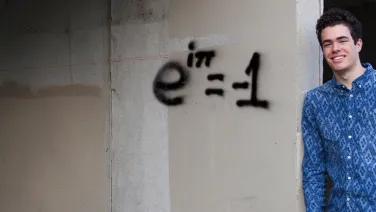The explosive impact of maths
This is a story about an unusual white dwarf which devours its neighbour and then explodes.
This is also a story about how maths can take you places you might not expect, such as into the furthest reaches of the Galaxy.
It starts when Professor Lilia Ferrario from the ANU Mathematical Sciences Institute became interested in a star which was traveling extremely rapidly compared to the other stars in the Galaxy.
Working with researchers from around the world, Professor Ferrario used mathematical modelling to determine the characteristics of the star, including its mass, temperature, chemical composition and its trajectory in the Galaxy.
Their conclusion was that this small star is actually a piece of shrapnel from a huge explosion that happened millions of years ago.
Professor Ferrario says the explosion was a supernova event in a binary system where a super-dense white dwarf, a dead star that has run out of nuclear fuel, sucked mass away from its giant star companion.
So this small star might help to answer one of the Universe’s big mysteries: what triggers supernovae explosions.
"This discovery gives weight to a theory that a white dwarf star devours material from its giant star companion until the white dwarf explodes as a supernova.
"The mass that accumulated on the white dwarf caused a thermonuclear runaway and a violent explosion that destroyed the binary system,” she explains.
White dwarfs, left to their own devices, would never explode, Professor Ferrario says. There are two theories on how they do.
"One suggests that two white dwarfs merge to form a single ultra-massive white dwarf, while the other theory envisages a white dwarf growing in mass by devouring material from its companion star," she says, with this discovery supporting the latter.
"In both cases, when the white dwarf becomes 1.4 times as massive as the Sun, a thermonuclear explosion is ignited leading to a partial or total disruption of the white dwarf.”
And total disruption of the idea that maths is something which begins and ends on the blackboard.
Find out more about ANU research in mathematics.

